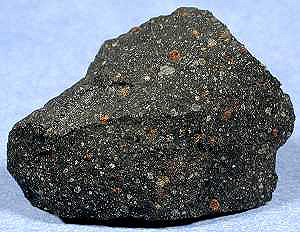 When a meteoroid or any other outer space debris falls to Earth, it is called a meteorite. The stones that are recovered from the impact are truly out-of-this world, because of their differences in the chemical composition when compared from rocks in this planet. Some of these meteorites are called chondrites.
When a meteoroid or any other outer space debris falls to Earth, it is called a meteorite. The stones that are recovered from the impact are truly out-of-this world, because of their differences in the chemical composition when compared from rocks in this planet. Some of these meteorites are called chondrites.
What is a chondrite? It is basically any stoney meteorite that contains chondrules, embedded in its rocky surface. Chondrules are molten droplets that are formed in outer space at high temperatures, but then cooled, solidified and combined with the chondrites. Scientists believe that they were dusts and small grains, which were already present in the primordial Solar System.
There are 15 distinct groups of chondrites based on their chemical composition, mineralogy and oxygen-isotope presence. One of them, the carbonaceous chondrites, is rare and makes up 5% of the meteorites that fall to Earth.
Carbonaceous chondrites contain high percentages of water, up to 20%. Organic compounds are also present – mainly sulfides, silicates and oxides. Minerals serpentinite and olivine can also be found.
Carbonaceous chondrites also are also sub-grouped according to the differences in their chemical composition, such as the presence of crystals. These groups are named, after the first prominent chondrite to be discovered, as: CI group (from Ivuna meteorite), CV group (from Vigarano meteorite), CM group (from Mighei meteorite), CR group (from 2 Pallas meteorite), CH group (these chondrites contain ‘high' percentages of metal), CB group (from Bencubbin meteorite), CK group (from Karoonda meteorite), CO group and other un-grouped carbonaceous chondrites.
Carbonaceous Chondrite found in Morocco
